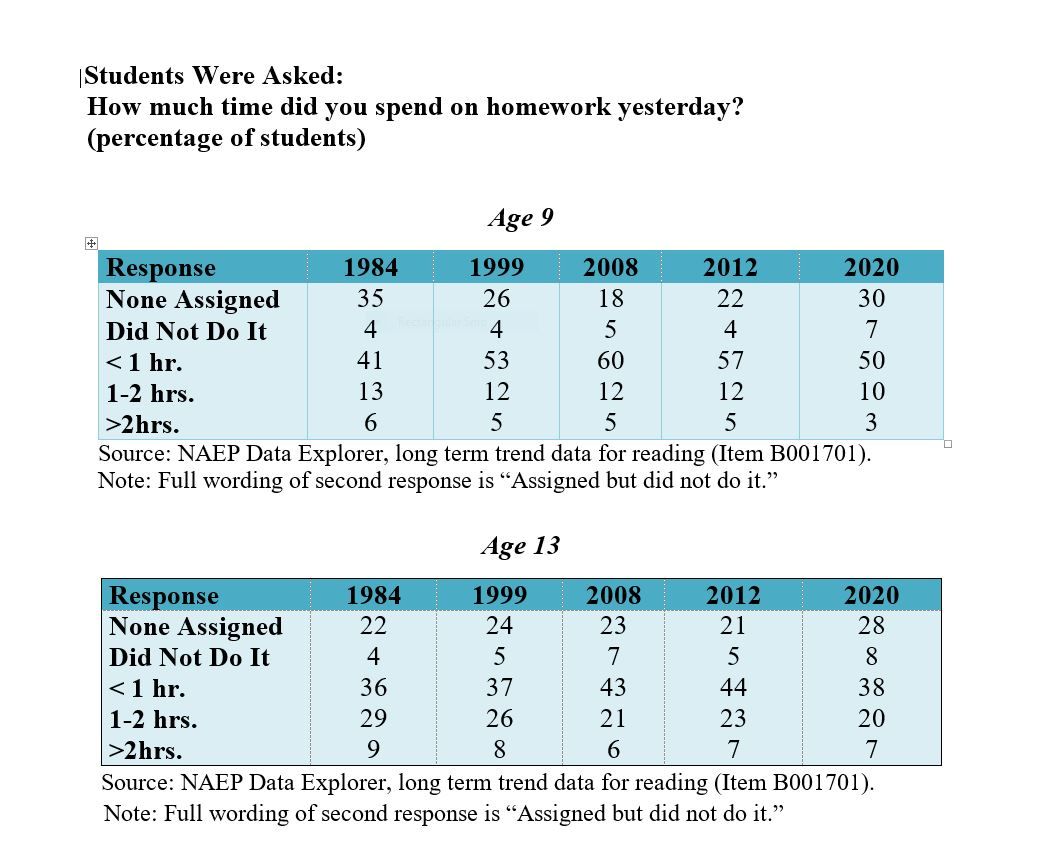The tables below display data on homework from the National Assessment of Educational Progress (NAEP), 1984-2020. During this period, students at age 9 reported an increasing homework load up until 2008, but the homework burden collapsed since then. The top two rows designate students with no homework--either none assigned or assigned and didn't do it--a statistic that bottomed out in 2008 at 23%. The shift from 1984-2008 was from students with no homework to some, as indicated by the growth of less than an hour, 41% in 1984 rising to 60% in 2008. The number of nine year-olds with a lot of homework, over two hours, barely budged over the same time period, 6% in 1984 to 5% in 2008. From 2008 to 2020, the overall homework load decreased a lot, and the share of students with no homework (again, the top two rows) bounced back to 37%. The 2020 NAEP survey was administered just before Covid disrupted schools in that year.

At age 13, the pattern is more stable. The top two rows--no homework--wiggle around over the years but are the same in 1984 and 2012 (26%). Not so, recently. The figure for 2020 (36%) is the largest in the table, indicating that more thirteen year olds had no homework in 2020 than at any other time in the previous thirty-six years.
What will happen to the homework load in post-pandemic years? Remedial instruction, high dosage tutoring, and accelerated instruction seem to be the favorite strategies that educators are employing to address learning recovery. If these interventions result in more work going home from school, future NAEP surveys may find increases in the amount of reported homework. But not necessarily.
One of the most interesting findings of international assessments in the 1990s was that eighth grade teachers in the United States assign more homework than their peers in such high scoring nations as Japan and South Korea. Notably, however, most students in Japan and South Korea attend after-school sessions (known as juku in Japan and hagwon in Korea) to prepare for high school entrance exams. A memorable chapter in Amanda Ripley's The Smartest Students in the World reported on an evening spent with a special police force in Seoul hunting down hagwons still tutoring children after the 10 PM curfew. Teachers, students, and parents in Japan and South Korea differentiate time after school spent on self-initiated academic study from school-assigned "homework." If Americans do the same with post-pandemic interventions that lead to more academic study, the NAEP surveys on homewok load may not be affected.
UPDATE: 2022 results from NAEP Long Term Trend, Age 9, show decline in homework continues.
